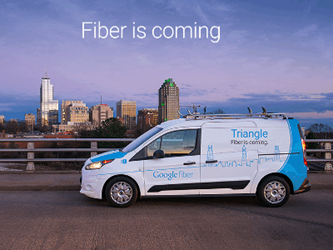Google Testing Wireless Transmission In Select U.S. Locations
By Jof Enriquez,
Follow me on Twitter @jofenriq

Google is installing "experimental transmitters" at up to 24 locations in the United States for non-commercial testing of a wireless network operating on frequencies between 3.4 GHz and 3.8 GHz, a filing with the Federal Communications Commission (FCC) indicates.
Among many unspecified tests, Google said it will conduct propagation testing using both a simple continuous wave (CW) tone and a broadband signal to understand the effects of clutter loss, differential fading, multipath, and other propagation phenomena, according to the company's heavily redacted public version of the filing. Google already has been testing new wireless transmission technology in the 3.5 GHz band in Kansas City.
This latest round of testing will be conducted in 24 areas selected based on radio propagation environment, height and variety of clutter (buildings and foliage), existence of suitable Google infrastructure and resources to support experimentation, and existence of partners who may participate in the tests. Google identified these locations as: Atwater, California, Mountain View, California, Palo Alto, California, San Bruno, California, San Francisco, California, San Jose, California, Boulder, Colorado, Kansas City, Kansas, Omaha, Nebraska, Raleigh, North Carolina, Provo, Utah, and Reston, Virginia.
Google says it will operate in these areas experimental transmitters and eNodeBs (also referred to as access points or base stations) that communicate with end-user devices (EUDs). All EUDs and equipment will be used only by Google’s employees, contractors, and certain “trusted testers” vetted by the company.
"We are working to test the viability of a wireless network that relies on newly available spectrum," a Google spokesperson tells Business Insider. "The project is in early stages today, but we hope this technology can one day help deliver more abundant Internet access to consumers."
Some of the cities selected already have superfast Google Fiber Internet services, but Google is exploring less expensive wireless technologies to augment its fiber optic network. The company recently put on hold plans to build Google Fiber networks in Mountain View and Palo Alto due to cost and time constraints, reports the San Jose Mercury News.
In the FCC filing, Google writes that the specific wireless technology under development "is highly sensitive and confidential in nature." However, its recent acquisition of point-to-point wireless service provider Webpass provides some clues.
Webpass technology "focuses on beaming wireless Internet from microwave towers to homes and apartments in urban areas," according to Inc.
Instead of running fiber optic cable to individual houses, which is expensive and disruptive to communities, Google could instead let wireless transmitters in buildings connect to fiber infrastructure installed in junction boxes or utility poles. This type of network — called fiber-to-the-neighborhood (FTTN) — already is used by other Internet service providers (ISPs) around the world, notes BGR.
Google also provides in the filing designated power limits, as well as its plans for protection against interference for incumbent users – including military radar systems – in the 3.4-3.8 GHz frequency range while conducting its experimental operations. The technology company previously sought FCC's permission to conduct tests in the rarely used millimeter wave (above 24 GHz) frequencies and other wireless spectrums.
